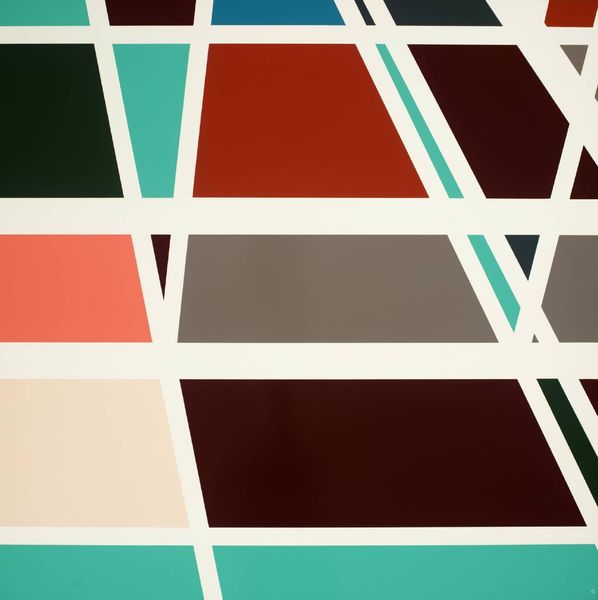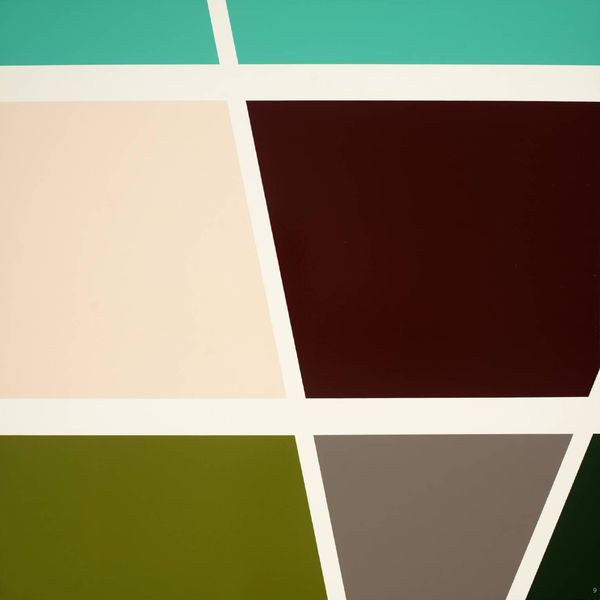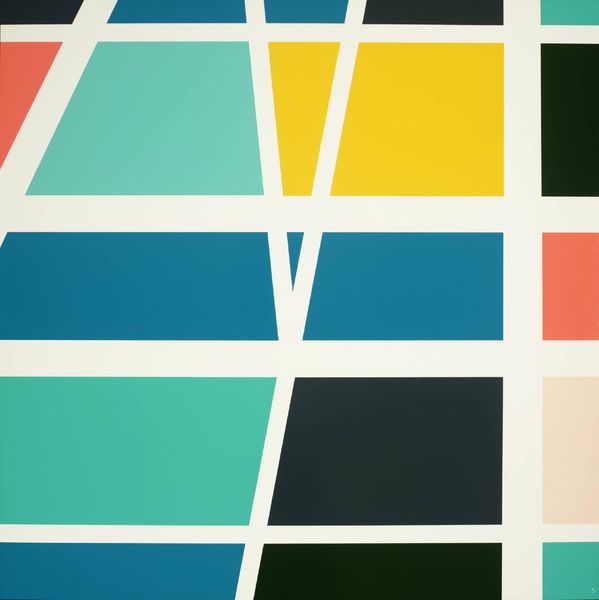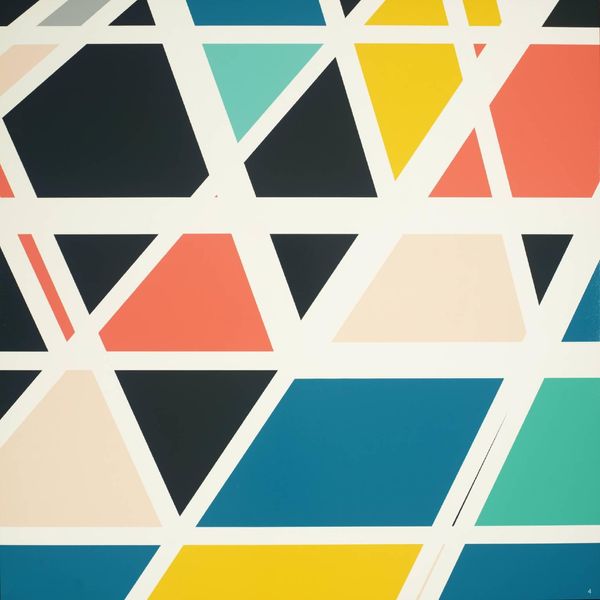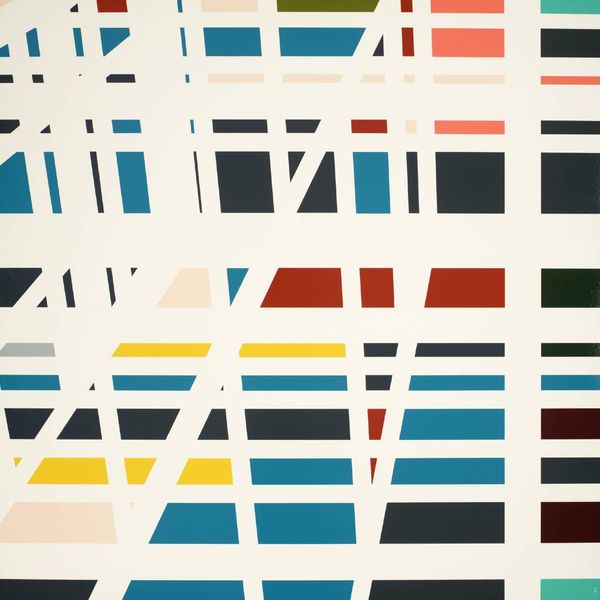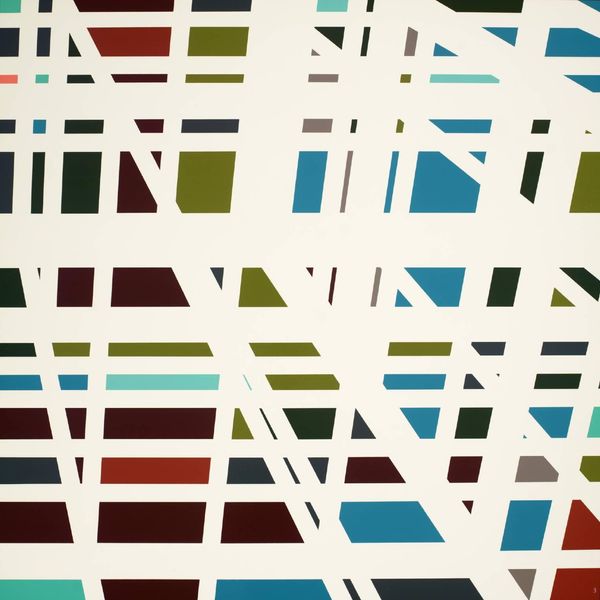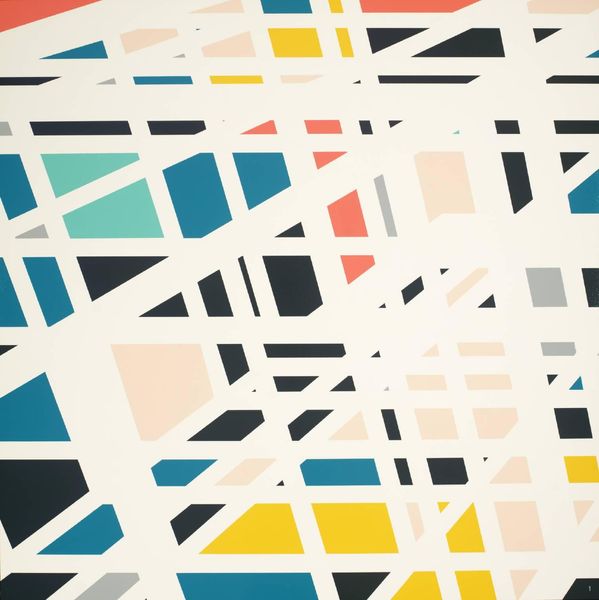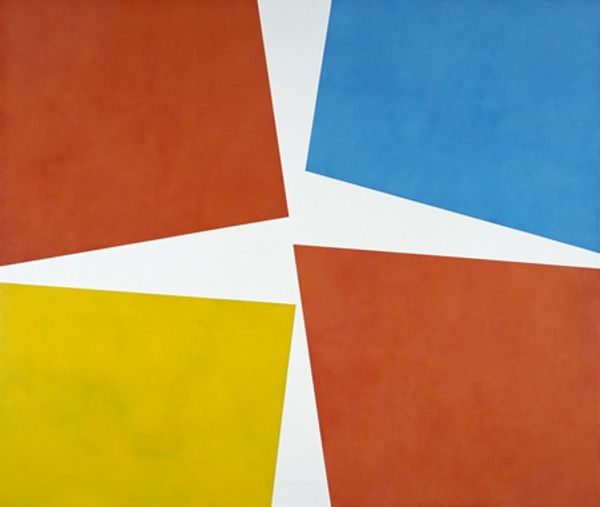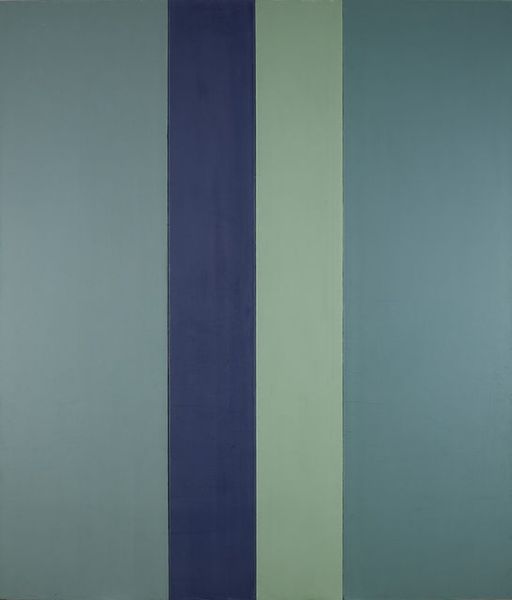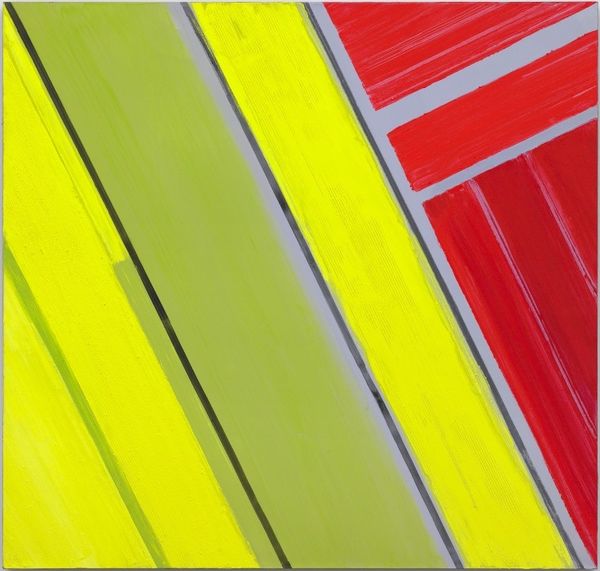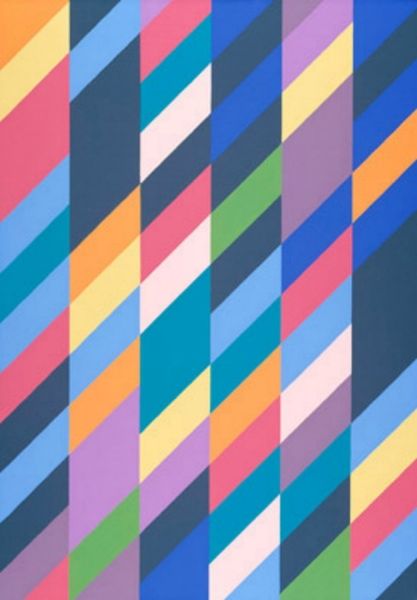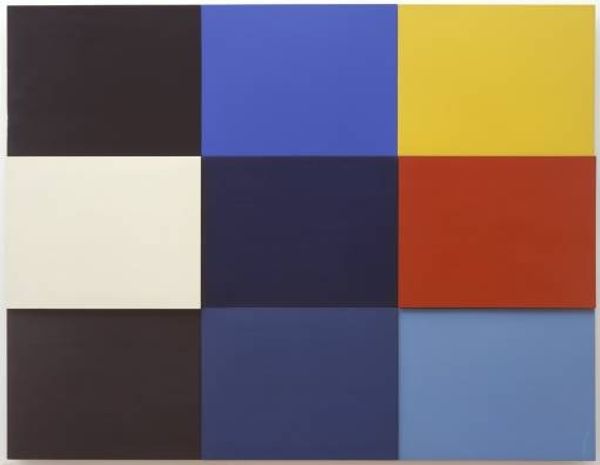![[no title] by Sarah Morris](/_next/image?url=https%3A%2F%2Fd2w8kbdekdi1gv.cloudfront.net%2FeyJidWNrZXQiOiAiYXJ0ZXJhLWltYWdlcy1idWNrZXQiLCAia2V5IjogImFydHdvcmtzLzcxM2I1ZmZlLTBjMTYtNGI4ZC1iYjM1LTM1NTlhNDcyMzAyMy83MTNiNWZmZS0wYzE2LTRiOGQtYmIzNS0zNTU5YTQ3MjMwMjNfZnVsbC5qcGciLCAiZWRpdHMiOiB7InJlc2l6ZSI6IHsid2lkdGgiOiAxOTIwLCAiaGVpZ2h0IjogMTkyMCwgImZpdCI6ICJpbnNpZGUifX19&w=3840&q=75)
Dimensions: image: 737 x 737 mm
Copyright: © Sarah Morris | CC-BY-NC-ND 4.0 DEED, Photo: Tate
Curator: Looking at this untitled piece by Sarah Morris... wow, it kinda makes me feel like I'm peering into a deconstructed Mondrian through a kaleidoscope. Editor: Yes, I’m immediately struck by how its architectural structure hints at the hidden power dynamics in urban planning. Those sharp lines, almost clinical in their precision, evoke a sense of control. Curator: Absolutely, there's this tension between the rigidity and that almost playful color palette that really gets me. A bit of optimism fighting against the grid, maybe? Editor: I see it slightly differently. The colors, though bright, are also muted, suggesting a kind of imposed conformity. It's as though these vibrant expressions are being deliberately suppressed. Curator: Huh, I guess it's all about perspective, isn't it? Art's funny that way. Editor: Indeed. And that's what makes it so powerful. It holds a mirror to our own biases and assumptions.
Comments
Join the conversation
Join millions of artists and users on Artera today and experience the ultimate creative platform.
tate 7 months ago
⋮
Dulles (Capital) is Morris’s first major print work. The portfolio comprises nine square prints containing abstract geometric grids. Blocks of bright greens, turquoise, yellow, browns, orange and greys are separated by white lines which appear recede into the distance at an extreme perspective. All nine prints may be displayed together, each print separated by 3.5cm of white wall, which becomes part of the work. They form a large square, depicting another, larger grid that echoes the structures within the individual prints. Displayed in this way they provide an off-centre variation of Morris’s painting Constitution Gardens 2000, (private collection). Each print is numbered in the lower right corner to designate its position within the overall grid. The bottom row (Tate P78602-P78604) is made up of large blocks of colour which become more broken up in the middle row (Tate P78599-P78601). By the top row (Tate P78596-P78598) the dense three-dimensional structure has become an intricate array of fragmented blocks and splinters of colour. Alternatively, the prints may be displayed individually or in smaller groups based on their positions within the full scheme.
